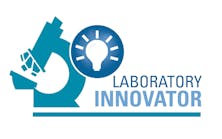Replacing laboratory equipment, substituting occult blood card developers, addressing Haemophilus parainfluezae, and identifying crenated red cells in urine
Edited by Daniel M. Baer, MD
When to update equipment?
Q: Is there an equation or rule of thumb for determining when you have outgrown a chemistry analyzer and to help identify and justify an upgrade to administrative folks? Theoretical throughput seems to be only helpful to broadly categorize analyzers.
A: I am not aware of any equation to use in deciding when it is time to replace a chemistry (or any other) analyzer. A number of factors must be considered in making the decision to change instrumentation, since there will be a variety of costs associated with making the change besides the cost of the new equipment. You need to evaluate appropriateness of current reference ranges for new instruments and possible reference range studies, training costs for staff, costs of computer changes, including interface software, and possible reprogramming to accommodate different reference ranges. Three major factors that should be considered in deciding to upgrade are:
- inability to provide reliable service in a cost-effective manner;
- inability to meet turnaround time needs or handle workload; and
- need to consolidate testing from several instruments.
If you have extensive downtime for repairs or high repair costs, your instrument may no longer be operating in a cost-effective manner. With prolonged downtime, you are losing employee productivity and increasing the costs of producing laboratory results. You may also not be providing satisfactory service for your physicians. If you have been receiving complaints relating to problems of this type, you could document these to administration. You might also compare your total costs for maintenance to those of other laboratories. One source of such information is the Laboratory Management Index Program (LMIP) of the College of American Pathologists.
Another important factor in deciding to upgrade instrumentation is a change in workload that has exceeded the capacity of your instrumentation. This may prevent you from meeting your turnaround time goals. While it is correct that theoretical throughput represents an ideal volume of testing that can be handled, it is possible to get an estimate of the workload needs of your laboratory by studying the pattern of workflow coming into your laboratory. This should include total workload per shift, as well as peak workload per hour. In the traditional hospital laboratory, peak workload typically occurred early in the morning. With laboratory consolidations and outreach efforts, and increasing emphasis in many hospitals on affiliating with physicians offices to provide laboratory work, peak workload may not be in the early morning, or may be consistent throughout the day. If your laboratory has experienced such a change in workload, or is anticipating outreach efforts, you may be able to justify new equipment to handle the existing or anticipated increase in samples.
Finally, since the major expense of laboratory testing is for personnel, a laboratory could justify new equipment if it could consolidate testing from multiple instruments into a single platform and thus reduce the need for technical staff. In such a scenario, the laboratory would estimate the costs of new equipment against the savings derived from reducing laboratory staff. This type of approach is particularly useful in a healthcare setting where there is high turnover, lack of available individuals to fill vacancies, or a need to reduce expenditures overall. Many new instruments are becoming available that consolidate chemistry and immunoassay instrumentation into a single instrument interface. For large volume laboratories, laboratory automation systems using track systems of various sorts can allow fewer operators to oversee multiple types of tests.
In addition to purchasing equipment, laboratories may also be able to obtain new equipment through cost-per-test agreements with manufacturers. The decision to buy or lease (such as with cost-per-test contracts) is based on total costs during the life of the contract, loss of availability of capitol with purchase, finance costs, expected useful life of the instrumentation, plans to change equipment or workload in the near future, etc. In many ways, the decision to buy or lease is similar to that with a car. Cost-per-test contracts are often less expensive, particularly when multiple laboratories group together to acquire similar instrumentation or combine contracts for multiple different types of instruments (such as hematology, chemistry, and coagulation). Since cost-per-test contracts do not require any purchase costs, they are often easier to sell to administration.
D. Robert Dufour, M.D.
Chief of Pathology
Veterans Affairs Medical Center
Washington, DC
Occult blood card developers
Q: Our lab is in a rural community hospital, where many elderly patients are given occult blood test cards by their physicians when they have an office visit. Most of these doctors are 20 miles to 30 miles away from our lab. Can we use the developer from one brand to develop the cards from another brand, or must we return them to the physicians offices to be developed and read?
A: The simple answer is that reagents are usually specific to a single manufacturer and lot of reagents. It is generally not a good idea to mix reagents from different lots for any test, since most manufacturers package inserts indicate that this is not acceptable (and, according to CLIA 88, manufacturers recommendations must be followed). In addition, many different testing methods are employed for occult blood testing, including those that detect peroxidase activity of hemoglobin (such as guaiac-based tests) and immunoassays for hemoglobin. Each of these uses a different type of developer, and they are not interchangeable.
It appears from the question that the laboratory provides services for many physicians offices. A possible solution to the problem would be for the laboratory to discuss with its clients the possibility of directly purchasing the occult blood cards (using a single type agreed to by the physicians and the laboratory) and supplying these to the offices. While this would take some coordination, it would eliminate the problem of different manufacturers and different lots of reagents, and allow the laboratory to process all of the cards centrally as a service to its clients.
D. Robert Dufour, M.D.
Chief of Pathology
Veterans Affairs Medical Center
Washington, DC
Haemophilus parainfluezae
Q: Are Haemophilus spp, other than H. influenzae, considered respiratory pathogens, and should they be reported when isolated from throat and sputum cultures?
A: Most Haemophilus spp colonize the mouth and pharynx in humans. These bacteria are small Gram-negative coccobacilli with fastidious growth requirements. Depending on the species, they require V-factor (nicotinamide adenine dinucleotide), X-factor (hemin), or both for growth. Chocolate agar provides both factors and is an excellent medium for recovery of Haemophilus spp, although it does not allow for determination of the hemolytic characteristics of the various species.
In the past, these species were considered nonpathogens, especially in the respiratory tract. Although the incidence of infections is low, it is now well documented that these organisms cause a variety of infections that range from head or respiratory tract infections to systemic infections such as endocarditis, septicemia, meningitis, abscesses, and soft tissue infections. Those species found in the respiratory tract and known to cause infections include
H. parainfluenzae, H. aphrophilus, and H. paraphrophilus. H. segnis, H. haemolyticus, and H. parahaemolyticus are highly uncommon pathogens.
H. parainfluenzae is the most common pathogen among the Haemophilus spp and has been associated with epiglottitis, pneumonia, bronchitis, otitis media, conjunctivitis, pharyngitis, sinusitis, and a variety of other infections. Pneumonia caused by H. parainfluenzae is seen primarily in the elderly, debilitated patients or those with chronic disease.1
Isolation of Haemophilus spp from normally sterile sites is usually considered clinically significant. Because H. parainfluenzae is rarely a cause of pharyngitis, and it is nearly impossible to collect a throat specimen without oropharyngeal contamination, the identification and reporting of H. parainfluenzae from throat specimens is seldom necessary. When attempting to diagnose lower respiratory tract disease, the clinical relevance of the recovery of Haemophilus spp, particularly H. parainfluenzae, from a respiratory tract specimen is problematic. In most cases, the recovery of H. parainfluenzae from an expectorated sputum specimen is not clinically significant. There are two approaches that may help resolve the issue of clinical significance. One approach is to report H. parainfluenzae or the other Haemophilus spp when numerous bacteria resembling Haemophilus are seen on the Gram smear and recovered in culture. The other method is for the physician to use a collection technique (e.g., bronchoscopy) that avoids the commensal flora found in the upper respiratory tract. As always, it is important for the laboratory to discuss these types of issues with the involved healthcare providers.
David Sewell, PhD, ABMM
Director of Microbiology
Veterans Affairs Medical Center
Portland, OR
Reference
Kayser, FH. Changes in the spectrum of organisms causing respiratory tract infections: a review. Postgrad Med J 68 (Suppl 3): S17-S23, 1992.
Crenated red cells in urine
Q: What, if anything, is the significance of crenated red cells in the urine?
A: Crenated red blood cells in the urine have the same significance as RBCs that are not crenated. Red blood cells indicate bleeding, either from tumor, erosion, infection, from the kidney glomeruli, or a variety of other causes. A small number of RBCs (two or fewer per high power field) are normal.
Red blood cells can become crenated when they are exposed to hypertonic concentrated urine (high specific gravity). Crenated and noncrenated cells may be found together in the urine. Acid can cause RBCs to lyse.
Daniel M. Baer, M.D.
Professor Emeritus
Department of Pathology
Oregon Health Sciences University
Portland, OR
Daniel M. Baer is professor emeritus of laboratory medicine at Oregon Health Sciences University in Portland, OR, and a member of MLOs editorial advisory board.
© 2002 Nelson Publishing, Inc. All rights reserved.





